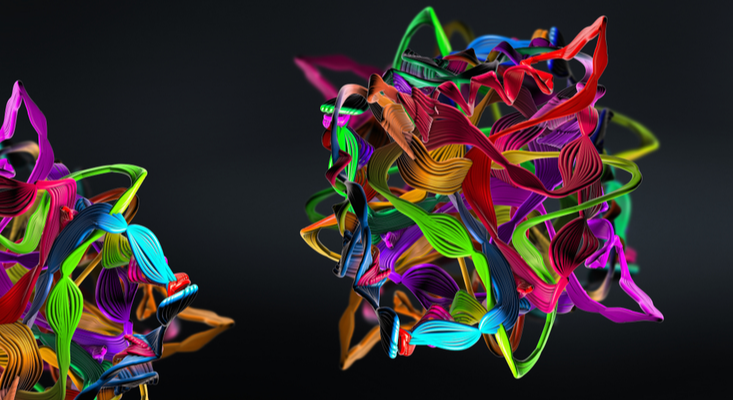“I have lately been especially attending to Geograph. Distrib, & most splendid sport it is,—a grand game of chess with the world for a Board.”
—Charles Darwin to C.J.F. Bunbury (1856)
In 1938, Yasunari Kawabata, a young journalist in Tokyo, covered the battle between master Honinbo Shusai and apprentice Minoru Kitani for ultimate authority in the board game Go. It was one of the lengthiest matches in the history of competitive gaming—six months. In his 1968 Nobel Prize-winning novel inspired by these events, The Master of Go, Kawabata wrote of the decisive moment when, “Black has greater thickness and Black territory was secure, and the time was at hand for Otake’s [Kitani’s pseudonym in the book] own characteristic turn to offensive, for gnawing into enemy formations at which he was so adept.” A strategy that led Otake to victory.
An extraordinarily complex game, Go today has become an epitaph on the tombstone in the cemetery of human defeat at the hands of algorithmic progress. (After the program AlphaGo annihilated Lee Sedol, one of Go’s best players, Sedol retired, saying his opponent was “an entity that cannot be defeated.”)
Charles Darwin was very likely the first person to have understood nature in terms of a game played across deep time. I have wondered how much further the Chess-playing naturalist might have taken this metaphor if, like Kawabata, he had studied Go. Unlike Chess, where the objective is to expose and capture the King by eliminating pieces, in Go the objective is to capture territory by surrounding enemy pieces, called stones, and by protecting unclaimed area.
We understand evolution through the lens of games.
Meditating on some subtleties of the game’s strategy can, I think, illuminate our understanding of the strategic character of evolution, which two recent papers on protein evolution, published in Science1 and Nature2 by different research teams, brilliantly spotlight. The comparison with Go illustrates how these two studies elevate evolution from a largely tactical process to one that is rich in strategic possibility. They explain, in other words, how second-order biological properties like robustness, complexity, and evolvability—that is, an increased potential for adaptive variability—emerge naturally under selection in parallel with the perhaps more familiar first-order adaptive traits, which increase fitness.
In particular, these papers show these second-order properties—which can be either neutral or harmless to the organism, or potentially advantageous—at work in proteins. Proteins, of course, are made up of large, folded-up molecules composed of one or more long chains of amino acids. These chains often fold into multiple different subunits forming large multimeric, also called multi-subunit, complexes. The various three-dimensional, tertiary structures proteins reliably form are largely responsible for adaptive functions, like giving off color when exposed to certain wavelengths of light.

The biological ideas of robustness, evolvability, and complexity resemble the tactical ideas of “Gote,” “Aji,” and “Seki” from Go by virtue of their common ground in combinatorial rule systems. Players of Go learn Gote, the defensive move that offers no threat and is not countered, as well as Sente, the attacking move that demands a response. Great players like Kitani recognize that building a “Thick,” or unassailable, territory with Gote is one of the surest ways of establishing an effective Sente in the future. The key is to build Aji, or latent opportunity or potentiality, into one’s board position. Seki describes a group of stones (pieces on the Go board) that cannot be modified, as any stone placed into the group will be captured.
The history of adaptive evolution has been recounted as a history of Sente—an inexorable sequence of tactical moves. This has sometimes been captured through the idea of the zero-sum game or the maxim “survival of the fittest,” where one adaptive genotype, or the genes an organism houses, benefits at the cost to all others. And every new advantageous mutation moves the triumphant genome up a fitness landscape toward its peak.
This rather simple-minded conception of evolution, much closer in spirit to Tic Tac Toe than to the richness of Chess and Go, has in the last several decades been challenged. Evolution not only proceeds by direct competitive advantages (Sente) but, through neutral processes like harmless genetic mutations (Gote), establishes robust phenotypes (Thickness) that develop out of an organisms’ genes interacting with the environment. From new neutral variation entirely new latent variation (Aji) can be accessed. And many traits once established cannot be changed (Seki) as a result of evolved co-dependencies.
Consider the Science paper. Researchers Jia Zheng, along with Ning Guo and Andreas Wagner, set out to determine how natural selection, operating through a fitness-maximizing process, might lead indirectly to increased evolvability, a kind of meta-evolution. To do this, they subjected yellow fluorescent proteins in the bacteria Escherichia coli to different intensities of selection.
In the first phase of their experiment, they put three different populations of yellow fluorescing E. coli through either strong selection, weak selection, or no selection. The strong selection amounted to optically sorting and propagating into the next generation only the top 20 percent of green fluorescing organisms. For the weak-selection condition, the researchers propagated all green fluorescing organisms, including the weakest. Not applying selection simply meant propagating the populations forward at random regardless of their fluorescence.
In the second phase, Zheng and his colleagues applied the same selection pressure across all three populations in order to have them evolve toward increased green fluorescence. They discovered that strong selection in the first phase, relative to weak selection or no selection, led to more rapid evolution toward the green target in the second phase.
This is curious. One might assume that strong selection eliminates variability that could contribute to evolvability, whereas weak selection allows for neutral variants to accumulate. The researchers found that strong selection was able to promote the accumulation of foldability-improving mutations, and that some of these mutations increased the mutational robustness of the proteins, providing protection against harmful mutations.
Strong selection, favoring foldability, in effect made the “fitness landscape” flatter. A flat landscape is one where neighboring mutations have approximately the same fitness (hence there is no local gradient). And flatness allows for greater variability since no mutation outcompetes all the others, thereby granting a genotype the opportunity to more rapidly “discover” the green fluorescing genotype.
The history of adaptive evolution has been recounted as a history of Sente—an inexorable sequence of tactical moves.
This was, in other words, an evolutionary Sente. Zheng and his colleagues in effect used selection to eliminate the genetic analog of weak stones (less yellow-fluorescing proteins). These then allow for Gote moves (neutral or harmless mutations) to accumulate and construct Thick groups (connected networks of weakly green-fluorescing proteins), and these new formations possess significant Aji (evolvability).
It is these larger evolvable formations of connected stones and genotypes that are the key to ultimate victory—whereby a territory is dominated by one player, in this case the strongly green-fluorescing proteins. As Zheng and his colleagues write, the rounds of directed evolution they subjected these yellow fluorescent proteins to “prove that natural selection itself can create the conditions under which Darwinian evolution can succeed.”
Georg Hochberg and his colleagues, in their Nature paper, also studied the evolution of proteins—not in the laboratory but through the use of phylogenetic reconstruction, which makes use of genotypes to infer a genealogical tree of ancestral proteins. They were interested in the observation that, for many protein complexes, multiple subunits have no functional value. By analyzing the evolution of steroid receptors and their interfaces with aqueous environments, they postulated that a combination of a hydrophobic ratchet (a bias toward hydrophobic amino acid substitutions) and the deleterious consequences of exposing hydrophobic amino acids to the interface, would produce an abundance of multi-subunit receptor proteins. A return to monomeric configurations, or shapes in which residues are exposed to water, would tend to be eliminated by purifying selection, selection against maladaptive variation. And in this way molecular complexes become entrenched—locked in.
As do many groups in Go. At the interface of rival stones, Seki is generated (the hydrophobic interface) whereby nothing can be changed without a cost to the players (purifying selection). Hence the board develops a complexity that reflects both competitive gains and frozen accidents.
In 1975, the Nobel Prize-winning chemist Manfred Eigen and his co-author Ruthild Winkler suggested that we understand evolution through the lens of games. Inspired by the Go-like lattice in Herman Hesse’s uncanny novel, The Glass Bead Game, Eigen and Winkler wrote, “Play is a natural phenomenon that has guided the course of the world from its beginnings. It is evident in the shaping of matter, in the organization of matter into living structures, and in the social behavior of human beings.” Russian Chess grandmaster Boris Spassky might have been surprised to learn that his assertion, “Chess is like life,” went beyond the simile.
David Krakauer is the president and William H Miller Professor of Complex Systems at the Santa Fe Institute in New Mexico. He works on the evolution of intelligence and stupidity on Earth. He is the founder of the InterPlanetary Project at SFI and the publisher/editor-in-chief of the SFI Press. His most recent book is an edited volume, Worlds Hidden in Plain Sight.
References
1. Zheng, J., Guo, N., & Wagner, A. Selection enhances protein evolvability by increasing mutational robustness and foldability. Science 370, eabb5962 (2020).
2. Hochberg, G.K.A., et al. A hydrophobic ratchet entrenches molecular complexes. Nature 588, 503-508 (2020).
Lead image: Zerbor / Shutterstock


























